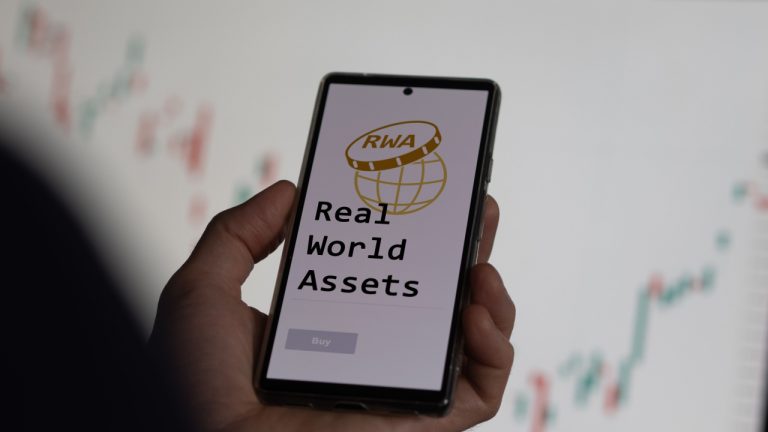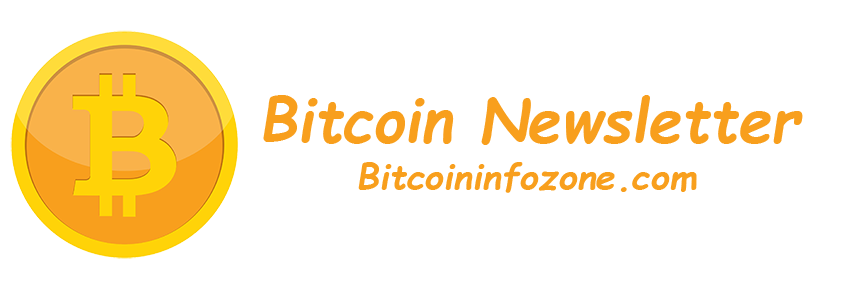Tokenized Real-World Assets: An Appealing Portfolio Diversification Strategy for Modern Investors – Zaid Ismail

Despite recently garnering much of the world’s attention, traditional exchange-traded funds (ETFs), including spot bitcoin ETFs, are still inferior to tokenized real-world assets (RWA), according to Zaid Ismail, the COO at the future-proof blockchain Mintlayer.
The Appeal of Tokenized Real-World Assets
Zaid Ismail stated that, unlike regular ETFs, trading of tokenized RWAs is not curtailed or restricted to normal working hours only. In addition, tokenized RWA, the blockchain-based digital tokens that represent physical and traditional financial assets, offer other significant advantages over ETFs, including improved liquidity, global accessibility, and real-time transactions. Tokenized RWAs also come with increased transparency, reduced costs, and direct ownership. According to the COO, such attributes make tokenized RWAs “a more versatile and appealing choice for modern investors seeking portfolio diversification.”
Despite being seemingly superior to ETFs, the future success of tokenized RWAs is dependent on how global regulators collaborate, as well as the standardization of rules governing such assets. The embrace of this new way of handling valuable assets by traditional financial institutions will also be key to the success of tokenized RWA, Ismail added.
Meanwhile, in his written answers sent to Bitcoin.com News via Telegram, the Mintlayer COO explains why developers should consider creating decentralized finance (defi) apps on the Bitcoin network. He also shares thoughts on some of the common blockchain challenges such as network clogging, high transaction fees, and the difficulty of running nodes, as well as how these slow down the adoption of the technology.
Below are Zaid Ismail‘s answers to the questions sent.
Bitcoin.com News (BCN): Exchange-traded funds (ETFs) are seen by some as the closest thing the Tradfi ecosystem has to tokenized real-world assets (RWA). In what ways are the tokenized RWAs superior to the typical ETFs?
Zaid Ismail (ZI): Tokenized Real-World Assets (RWAs) on the blockchain offer significant advantages over traditional ETFs, including 24/7 trading that bypasses the restricted hours of traditional exchanges, improved liquidity, worldwide accessibility, real-time transaction capability, increased transparency, reduced costs from fewer intermediaries, enhanced customization options, and direct ownership. Collectively, these attributes make them a more versatile and appealing choice for modern investors seeking portfolio diversification.
BCN: As regulatory frameworks continue to evolve, how would the cross-border trading and ownership of RWAs work, especially as the Tradfi institutions are dipping their toes into the world of tokenized RWAs?
ZI: In the past few years, the cross-border trading and ownership of tokenized Real World Assets (RWAs) have become more feasible. However, as the regulatory frameworks evolve, there is a need for international cooperation and standardization to ensure smooth cross-border transactions.
Traditional finance institutions are also starting to get involved in tokenized RWAs. It’s like they are testing the waters of this new digital approach to assets. As they do so, they will need to work with the regulators to adapt the existing regulations to the changing landscape.
In essence, the future of cross-border trading and ownership of tokenized RWAs relies on global collaboration, standardized rules, and the willingness of traditional financial players to embrace this innovative way of handling valuable assets.
BCN: Why would an asset owner want to go through the hassle – and the learning curve – to tokenize their assets? What does tokenization change for asset originators and traders?
ZI: Although asset owners might initially perceive tokenization as a complex process, with platforms like Mintlayer the process is simplified, reducing hassles for asset owners. With Mintlayer, tokenization is embedded and simple, so non-technical users can issue tokens easily without having to use deployer contracts like on Ethereum.
Additionally, Mintlayer Institutional is building a SaaS platform for institutional clients that will help to simplify the process of issuing, monitoring and dealing with all the compliance aspects required for tokenization.
Tokenization the benefits it offers can significantly outweigh the initial learning curve and effort. Tokenization is a compelling choice for asset originators and traders because it enhances liquidity and allows fractional ownership for high-value assets like real estate or art. It also offers global market access, transparent transactions via blockchain, and efficient asset management with smart contracts. For investors, especially in high-inflation regions, tokenized assets provide a stable and accessible investment avenue, revolutionizing asset origination and trading.
BCN: With blockchains still getting clogged, the spikes in transaction fees, and the difficulty in running nodes, do you believe that the blockchain infrastructure today is ready for the tokenization of real-world assets at scale?
ZI: The current state of blockchain infrastructure, particularly with layer 1 solutions, indeed faces challenges like congestion, spikes in transaction fees, and difficulties in running nodes. These issues become apparent during high-demand periods, as seen with projects like Ordinals, which require minting directly on the Bitcoin mainchain. However, the advent of layer 2 solutions like Mintlayer is changing the landscape, signaling that blockchain is indeed gearing up for the tokenization of real-world assets at scale.
Layer 2 solutions, such as Mintlayer, address these challenges by offloading transactions, NFTs, and other operations from the main chain. This approach significantly reduces congestion and transaction fees on Bitcoin. By shifting these processes to a secondary layer, we can maintain the security and integrity of the main blockchain while enhancing its scalability and throughput.
Subsequently, within our own chain on the Mintlayer network, thanks to our UTXO infrastructure, it is possible to batch multiple transactions into a single one, saving space and lowering the fees. Furthermore, our HTLC smart contract embedded in Mintlayer will allow atomic swaps and lightning network integration, allowing a way to route transactions on a peer-to-peer network that doesn’t require tx to be permanently saved forever on the blockchain.
Our architecture not only allows transaction batching and atomic swaps but Mintlayer’s low node requirements are pivotal in fostering a more inclusive and decentralized network. The fact that anyone with a standard PC, or even a Raspberry Pi, can run a node is a testament to the democratization of blockchain technology. This accessibility is crucial for decentralization, as it allows a wider range of participants to contribute to network security and consensus processes.
The combination of these advancements suggests that the blockchain infrastructure, especially with the integration of layer 2 solutions like Mintlayer, is indeed ready to handle the tokenization of real-world assets at scale. By addressing the key challenges of layer 1 blockchains and making participation more accessible, we are paving the way for a more robust, efficient, and inclusive blockchain ecosystem capable of supporting large-scale asset tokenization.
BCN: The Bitcoin blockchain is said to lack defi capabilities, but projects like yours are still trying to bring defi to Bitcoin. Why should developers care about building their decentralized applications in the Bitcoin ecosystem?
ZI: Although Ethereum significantly revolutionized the defi space years ago, Bitcoin remains the prime mover in the entire crypto ecosystem, boasting the most liquidity and market share. It not only has the largest user base but is also the most recognized and widely held cryptocurrency. Building defi applications within the Bitcoin ecosystem opens opportunities to tap into this vast market, potentially leading to higher adoption rates and greater network effects.
The decentralized nature of the Bitcoin network offers a level of security and trust not found in many other platforms. By developing defi applications on Bitcoin, developers can leverage this decentralization, thereby reducing the risks of censorship and single points of failure.
Additionally, greater access to Bitcoin’s liquidity is a significant advantage for defi applications built within its ecosystem. Developers can tap into Bitcoin’s substantial liquidity pool, which is especially beneficial for financial applications requiring significant capital inflows.
In summary, the Bitcoin ecosystem, augmented by layer 2 solutions like Mintlayer, presents a unique blend of security, a large user base, and innovative technologies. These factors make it an appealing platform for developers eager to create state-of-the-art defi applications.
What are your thoughts about this interview? Let us know what you think in the comments section below.
